LibraryUX
tl;dr
Client
The University of Oslo Library & The National Library of Norway
Role
Contracted design and research engagement, working in close collaboration with the leadership and staff from the digital services department of the library.
Participant Observations • Interviews • Strategic Framing • Toolkit Design • Workshop Design & Facilitation • Team Mentorship
Timeframe
January 2015 – June 2016
Brief
To create an approach for introducing & positioning design as a strategic competence within the University of Oslo library to help evaluate and improve the experience of both existing and new services.
OutcomeS
An open, participative and adaptive approach and a flexible one to two-day workshop format in which design processes and methods could be introduced.
A core LibraryUX team that was responsible for continuing to run design workshops and improving the design literacy at the university library and other academic libraries in the Nordic region.
I led 11 LibraryUX workshops at the University of Oslo library and other university libraries in Norway, Finland and Sweden.
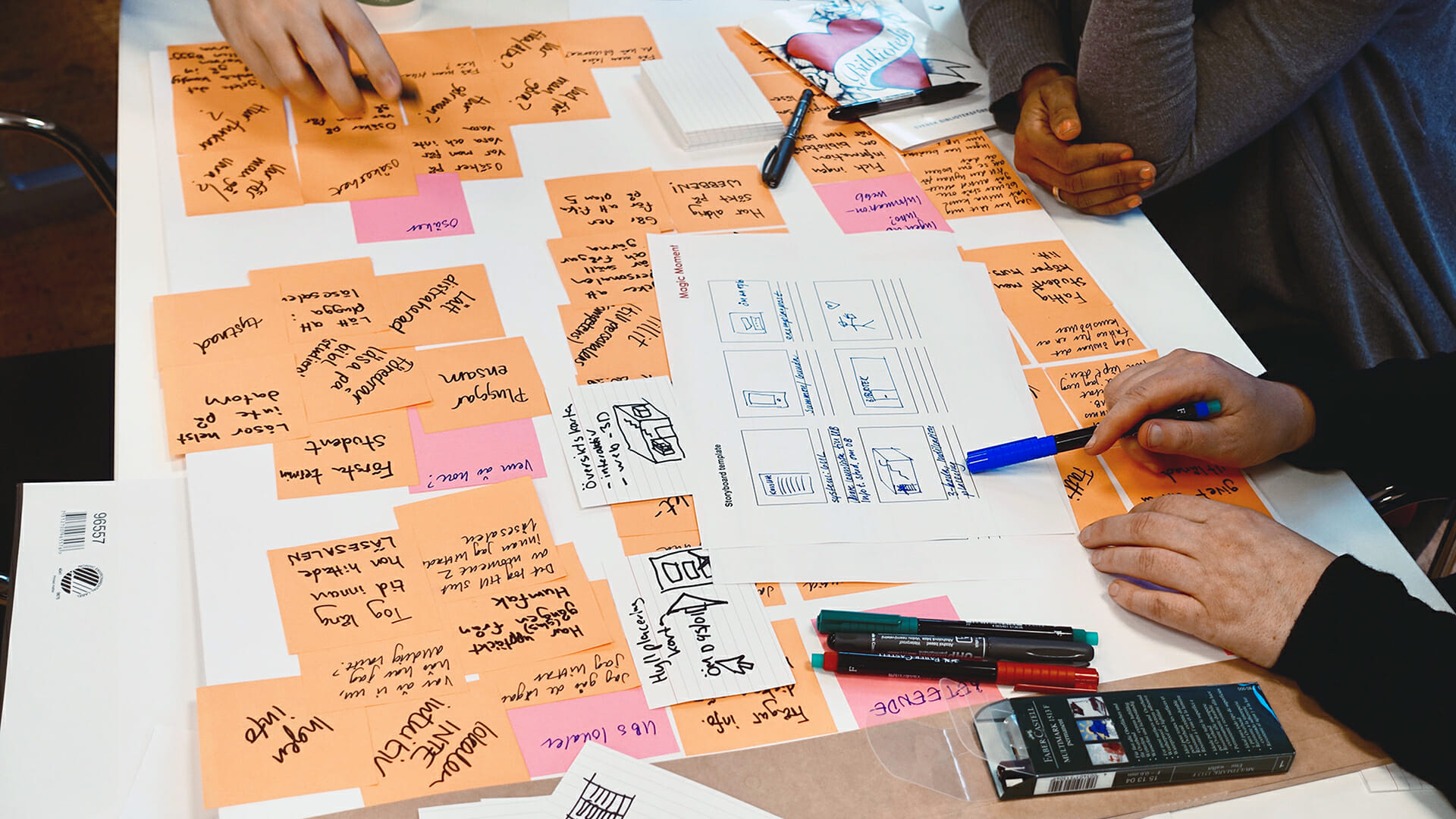
Goals & background
Introducing & positioning design as a strategic competence within the University of Oslo library to ensure a focus on user experience during service development.
Nowadays, libraries are not the only way to look for knowledge; often, a simple google search is enough. Emerging technologies regularly create new channels and platforms for creating and accessing information – affecting our needs and expectations from libraries. As a result, both public and academic libraries face many challenges in the years ahead.
By continuously rethinking their services based on changing habits, expectations, and routines of their patrons, and using the new possibilities offered by new and emerging technologies, libraries can maintain their position as an essential resource for research, teaching, and society. This project was a step in this direction by attempting to build the culture and capability of rethinking and developing services at the library, with a focus on user experience.

What I did
Project Management
Leadership
Scheduling
Collaboration
Communication
Reporting
Workshop Planning
Strategy
Approach Definition
Workshop Format
Team Mentorship
Workshop Facilitation
Formulating Methods
Design
Field Research
Participant Observations
Interviews
Workshop Materials
Toolkit Design
Role: Project Design Lead (Under Contract)
I collaborated closely with the leadership & staff from the digital services department at the university library throughout the project.
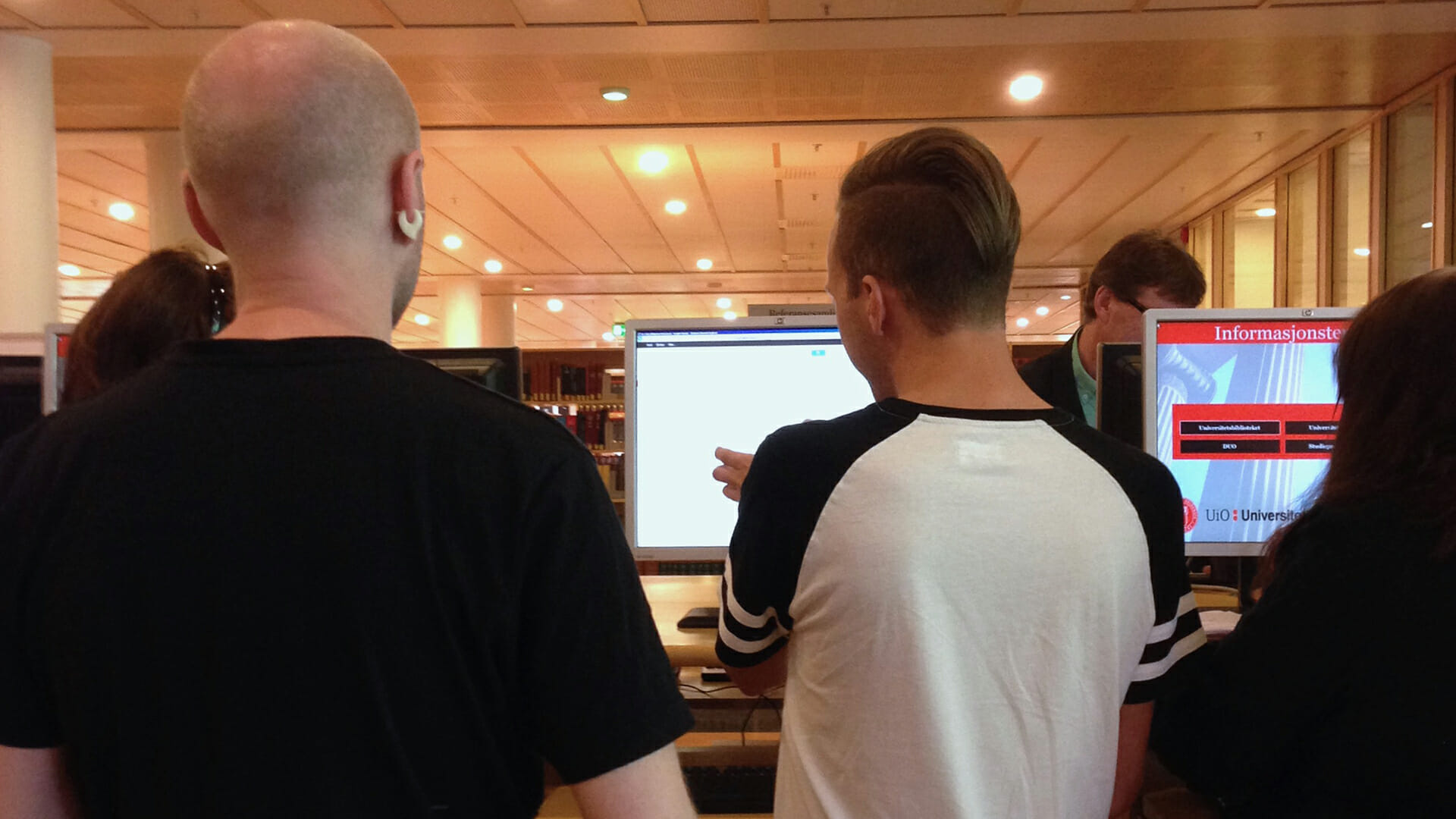
Librarians and staff members from the library following students and researchers in a service walkthrough during a workshop
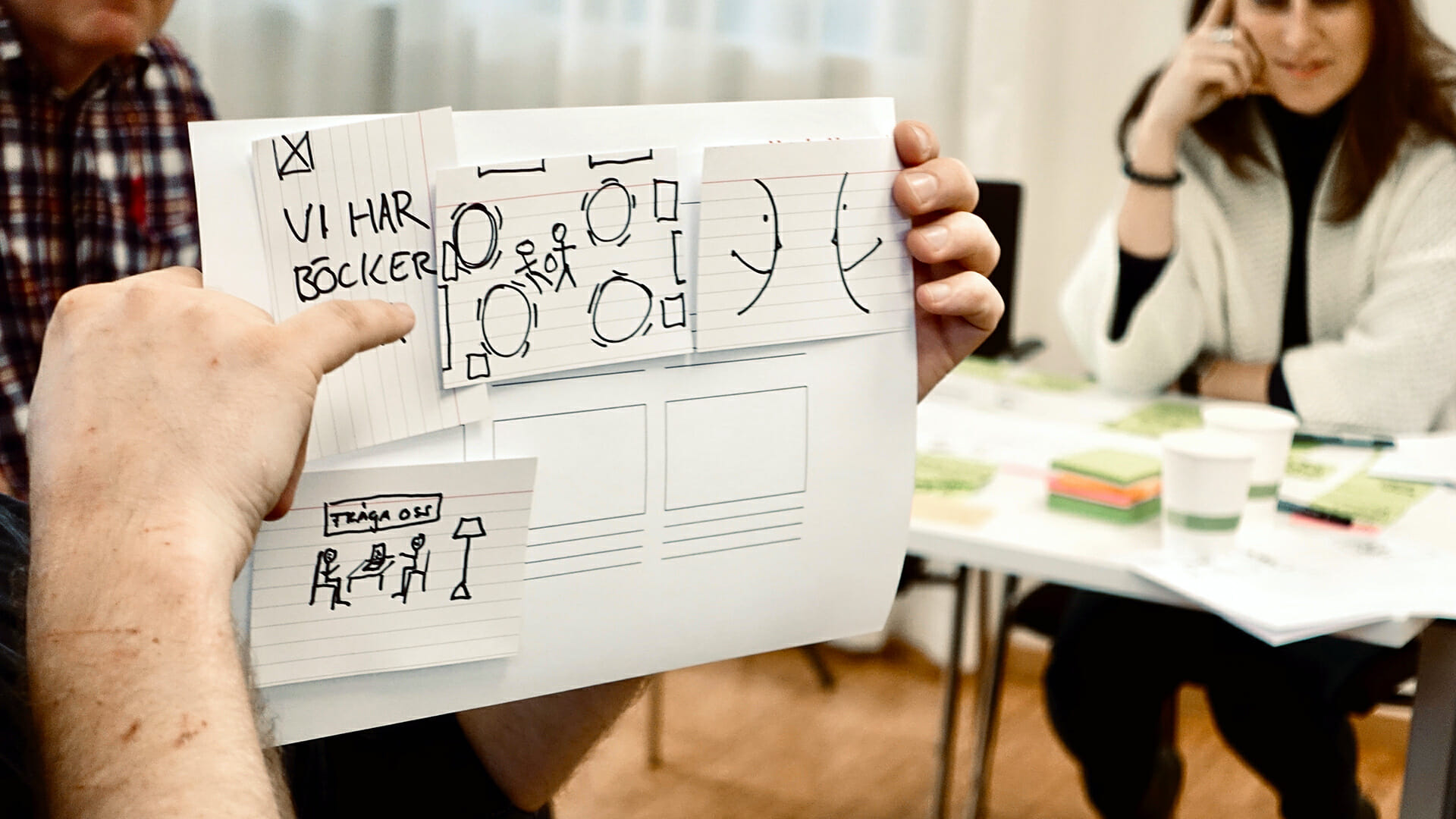
User journey storyboards being presented during a workshop
The LibraryUX Approach
The LibraryUX Approach
The following principles guided the format and structure of the workshops where design methods and processes were introduced to librarians.
The following principles guided the format and structure of the workshops where design methods and processes were introduced to librarians.
The following principles guided the format and structure of the workshops where design methods and processes were introduced to librarians.
open and active
spaces
open and active
spaces
flexible and playful
materials
flexible and playful
materials
participatory AND semi-structured
actions
participatory AND semi-structured
actions
Enabling free movement was central to the approach. We were inspired by the agility and adaptability of a design studio environment, that gives designers access to both personal and shared work-spaces. We conducted the workshops in spaces that had furniture that could be rearranged to create open spaces that allowed for free movement and access to vertical surfaces such as walls and windows.
Enabling free movement was central to the approach. We were inspired by the agility and adaptability of a design studio environment, that gives designers access to both personal and shared work-spaces. We conducted the workshops in spaces that had furniture that could be rearranged to create open spaces that allowed for free movement and access to vertical surfaces such as walls and windows.
We ensured that the workshop environments be equipped with a wide variety of stationery and other kinds of inspirational and playful materials. In our workshops, we regularly used Legos, old magazines (to be cut up and reused), and cardboard sheets to physically create outcomes like service blueprints, concept metaphors, and service touch-points.
Rather than introduce set design methods, we attempted to introduce different ways of thinking and acting, such as understanding people and systems together, sense making and synthesis, brainstorming, visual thinking, and prototyping and evaluation. The workshops intended to inspire the librarians to be more creative, improvisational, and constructive in their everyday practice.

The open space and movement between walls and tables created an active working environment helped with ease of movement, interaction between participants, and ready access to shared and personal spaces.
The LibraryUX Approach
The following principles guided the format and structure of the workshops where design methods and processes were introduced to librarians.
open and active spaces
The open space and movement between walls and tables created an active working environment helped with ease of movement, interaction between participants, and ready access to shared and personal spaces.
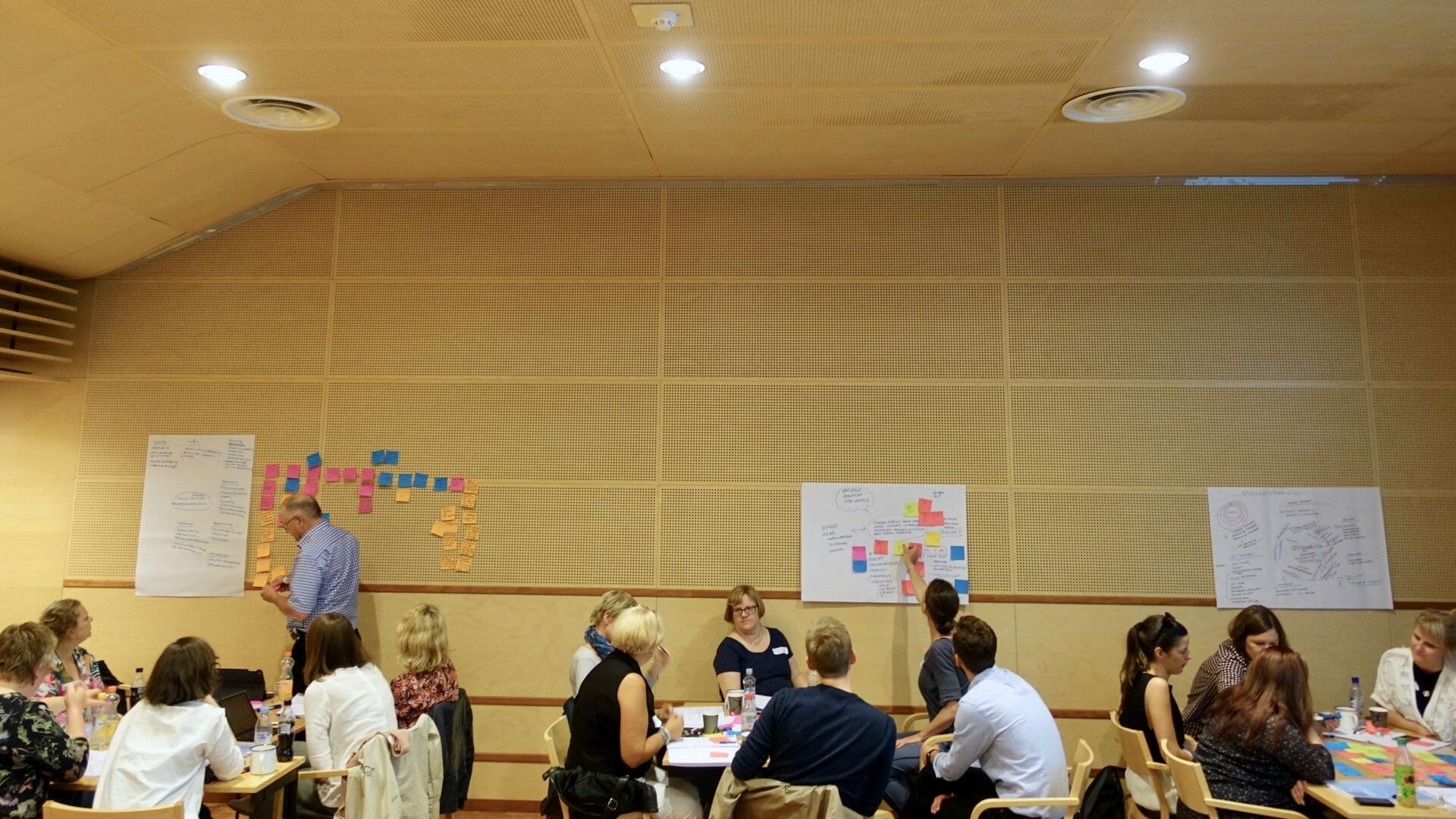
The open spatial arrangement during the workshops allowing for access to tables and walls and free movement
We usually avoided the use of templates as materials in the workshops since we felt they tend to restrict improvisation. With templates, we noticed that participants became focused on using it ‘correctly’, rather than reflectively engaging with the process.
flexible and playful materials
We usually avoided the use of templates as materials in the workshops since we felt they tend to restrict improvisation. With templates, we noticed that participants became focused on using it ‘correctly’, rather than reflectively engaging with the process.
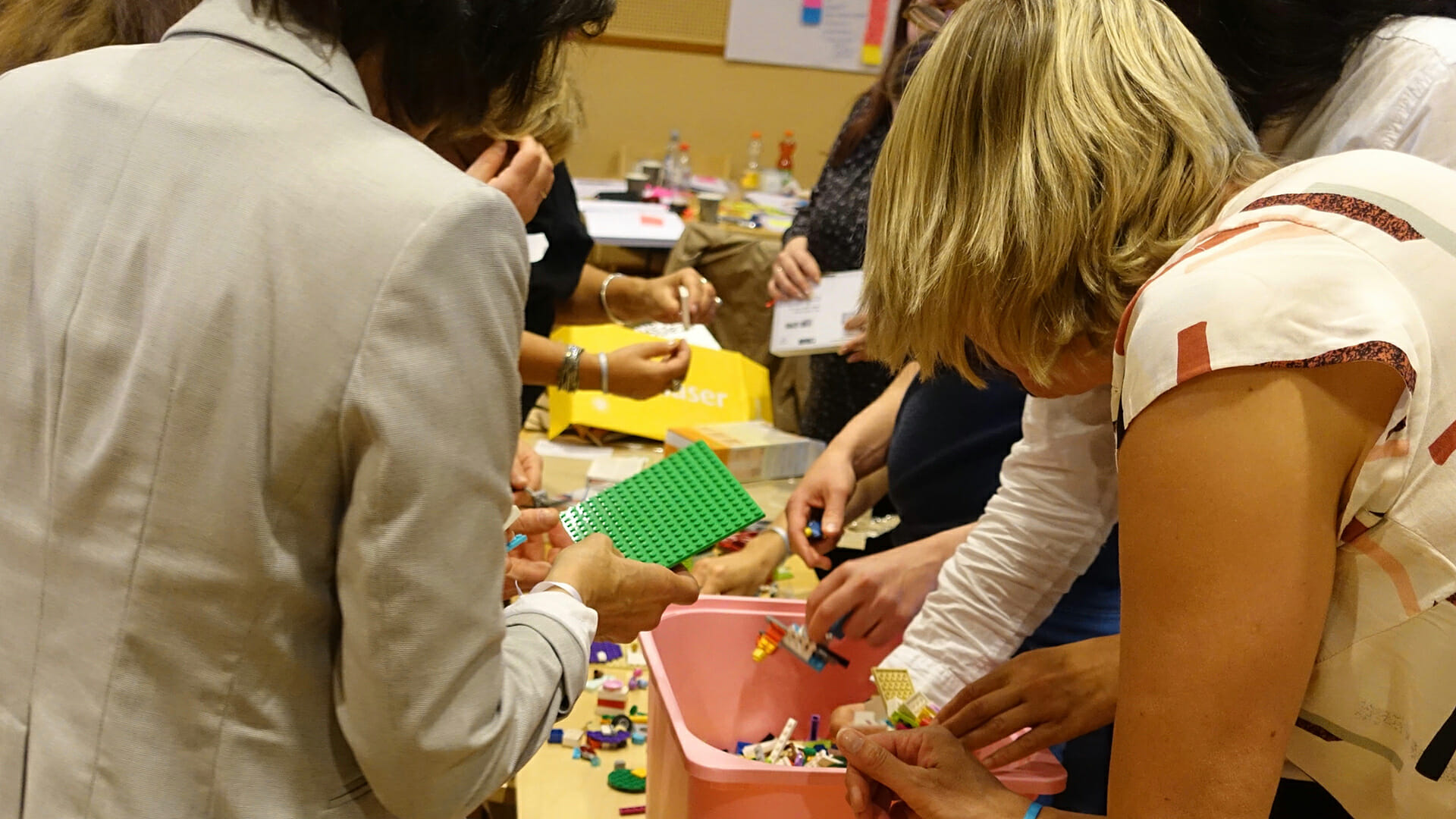
Free access to playful materials like legos, cardboard, magazine cutouts etc. enabled participants to prototype their concepts in more tactile and tangible ways
Focusing on the activities and participants’ actions themselves rather than a specific set of methods, helped the approach become more accessible and applicable in real world practice. Rather than learning to use a method correctly, librarians could work more improvisationally by bringing in their own creative ideas and drawing from their own experience.
participatory AND semi-structured actions
Focusing on the activities and participants' actions themselves rather than a specific set of methods, helped the approach become more accessible and applicable in real world practice. Rather than learning to use a method correctly, librarians could work more improvisationally by bringing in their own creative ideas and drawing from their own experience.
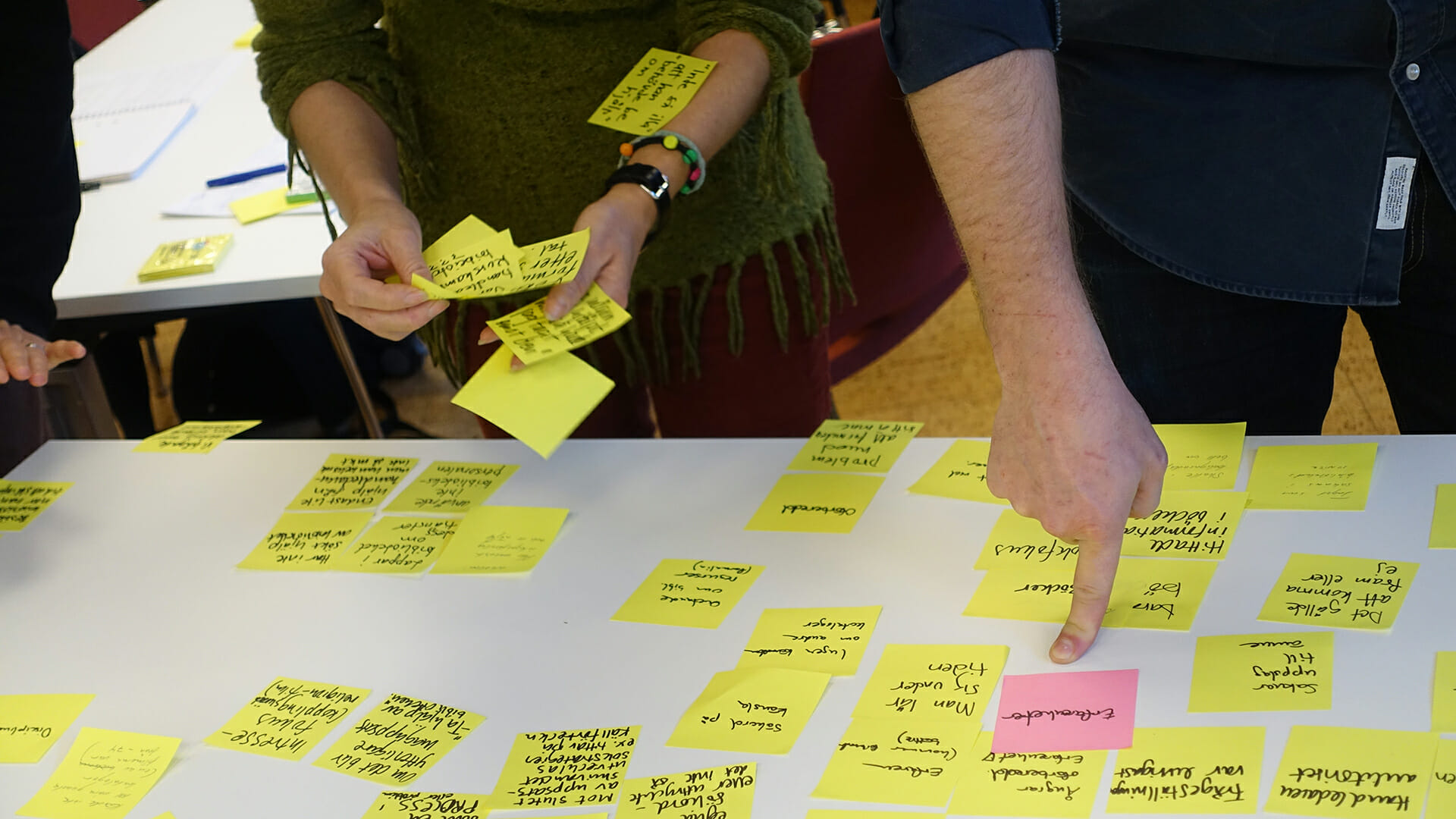
Participants during an improvised mapping session during a workshop
The LibraryUX Workshops
The LibraryUX Workshops
Rather than introducing design as methods and tools that are completely different from the librarian’s everyday work practices, we introduced them as a mindset and way of working that could complement the participants' own practices and experience. This is why the workshop format was designed to be flexible and adapted to the context.
We usually conducted a few short rounds of pre-workshop discussions with the librarians to identify the problems that they would like to work with so we could introduce design in the context of the issues that the librarians were dealing with on a day to day basis. Therefore, the workshops represented a mix of the familiar and the unfamiliar, allowing the librarians to use their experience, knowledge, and know-how, but also requiring them to improvise and adapt to the change in space, materials, and semi-structured actions.
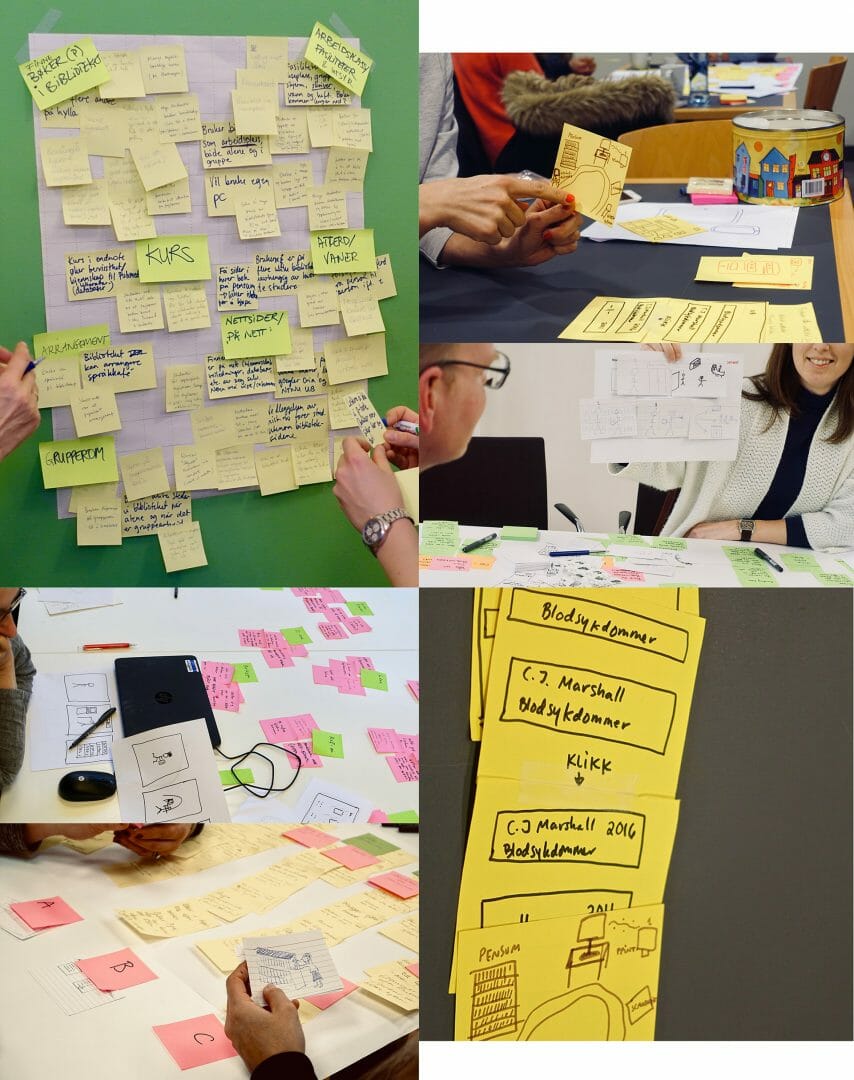
The workshops followed a broad structure of discovery, synthesis and framing, ideation and critique, and prototyping and testing. The exact nature of each of these design actions depended on the duration of the workshop and the problems that we would be working with in the workshop. An in-depth description of two of the workshops and how they changed from one setting to another can be read here.
I conducted 11 workshops for more than 300 participants across different department and subject specific libraries at the University of Oslo and academic and research libraries in Norway, Sweden, and Finland.
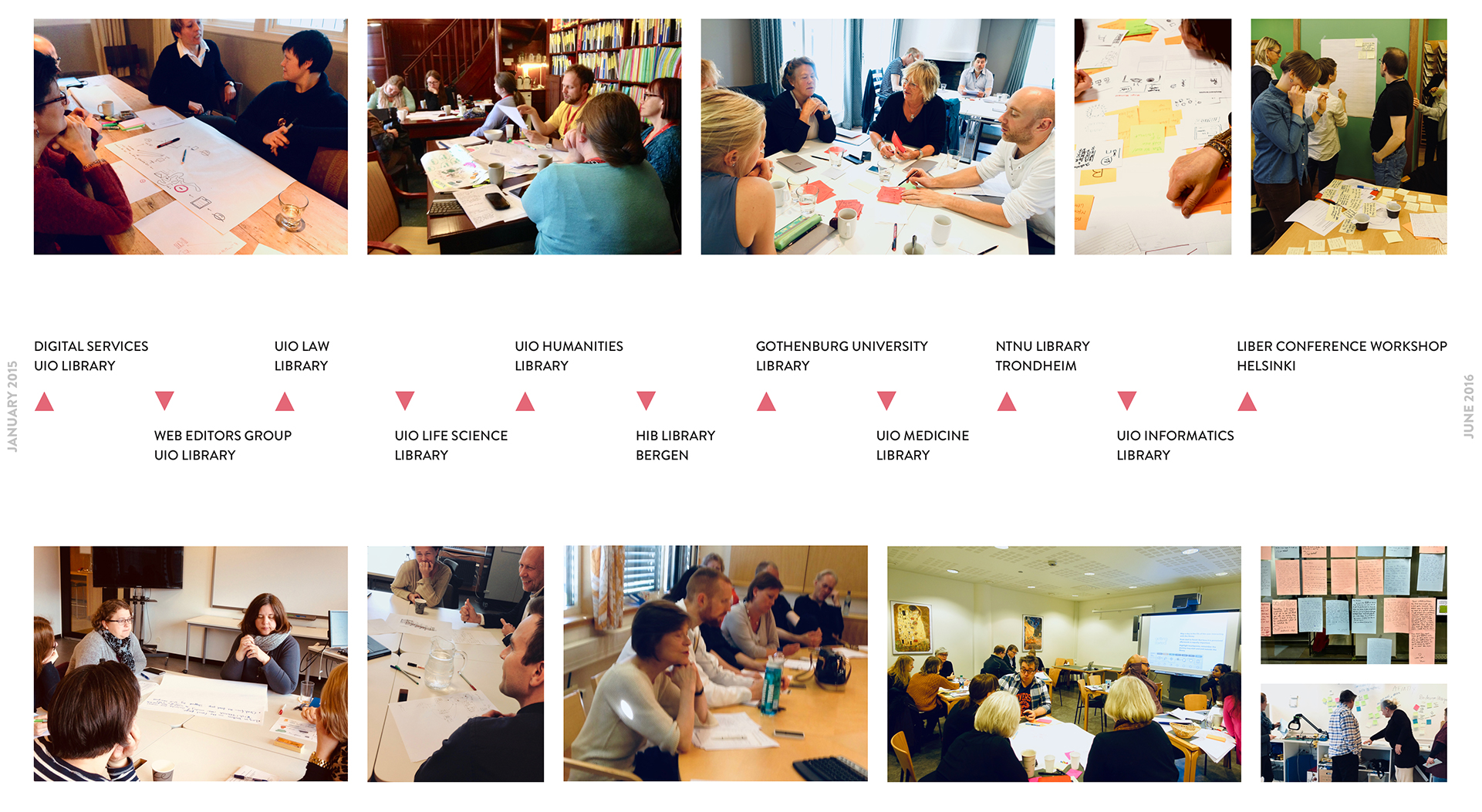
List of workshops I led from January 2015 to June 2016
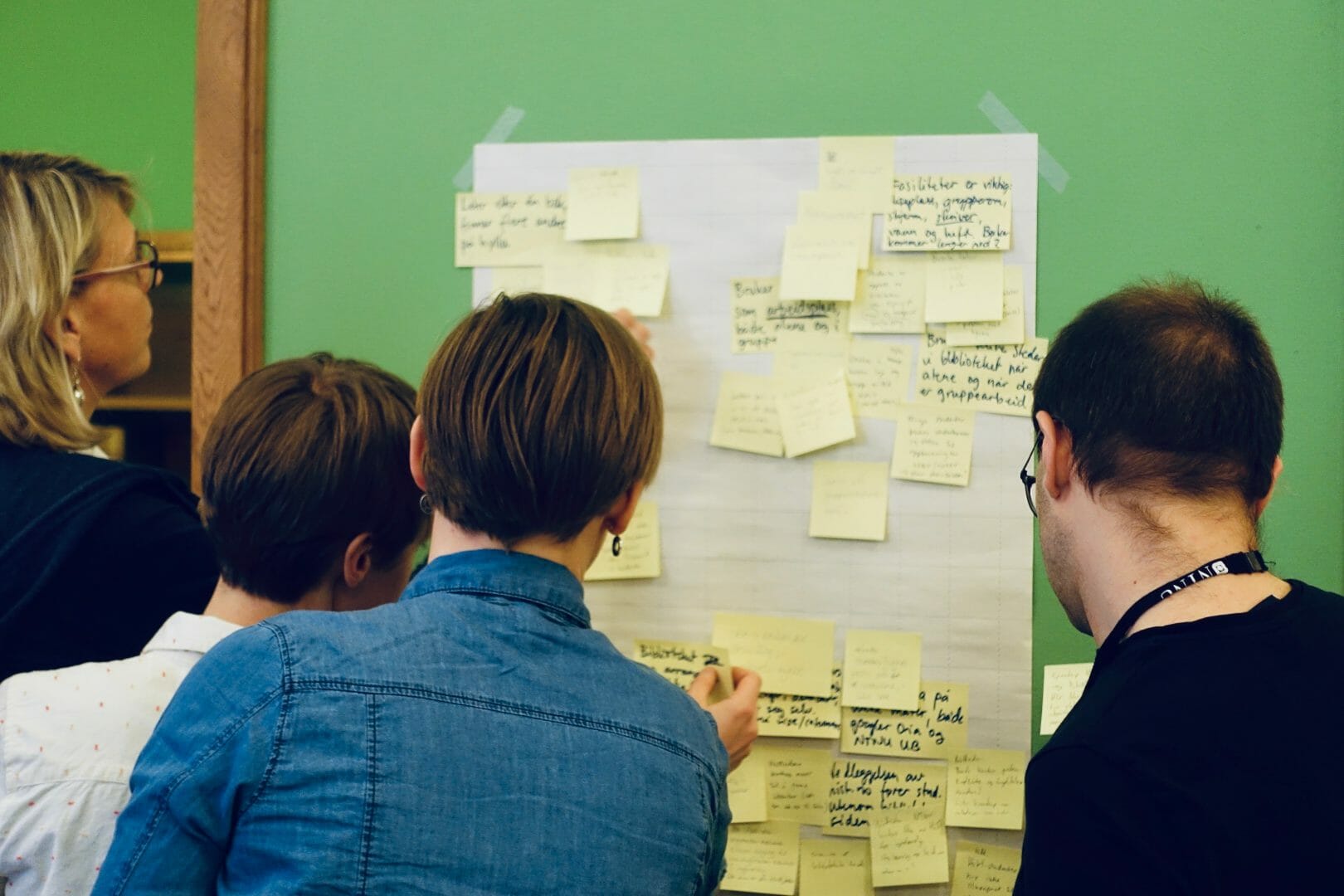
Approach
Collaboration and Improvisation
DESIGNING DESIGN
At its core, the LibraryUX project was about developing agility in the library's work practices and mindset and helping librarians innovate in the face of constant change. At the same time, we did not want to position design as a mandate from the library's leadership and management. Instead, we wanted to involve and embed design at the grassroots, to create a diverse, participatory, and open culture of innovation at the library through design.
There are no set solutions or processes for such an ambitious and complex goal. And so, I adopted a collaborative and improvisational design approach for this project. I began by conducting informal interviews with the core team involved with LibraryUX. The interviews emphasized discussion over precise answers, so I could learn as much as possible organically. I also moved into an empty office space at the library and spent a couple of days every week throughout the course of the project to understand and mesh into the culture at the library.
01/
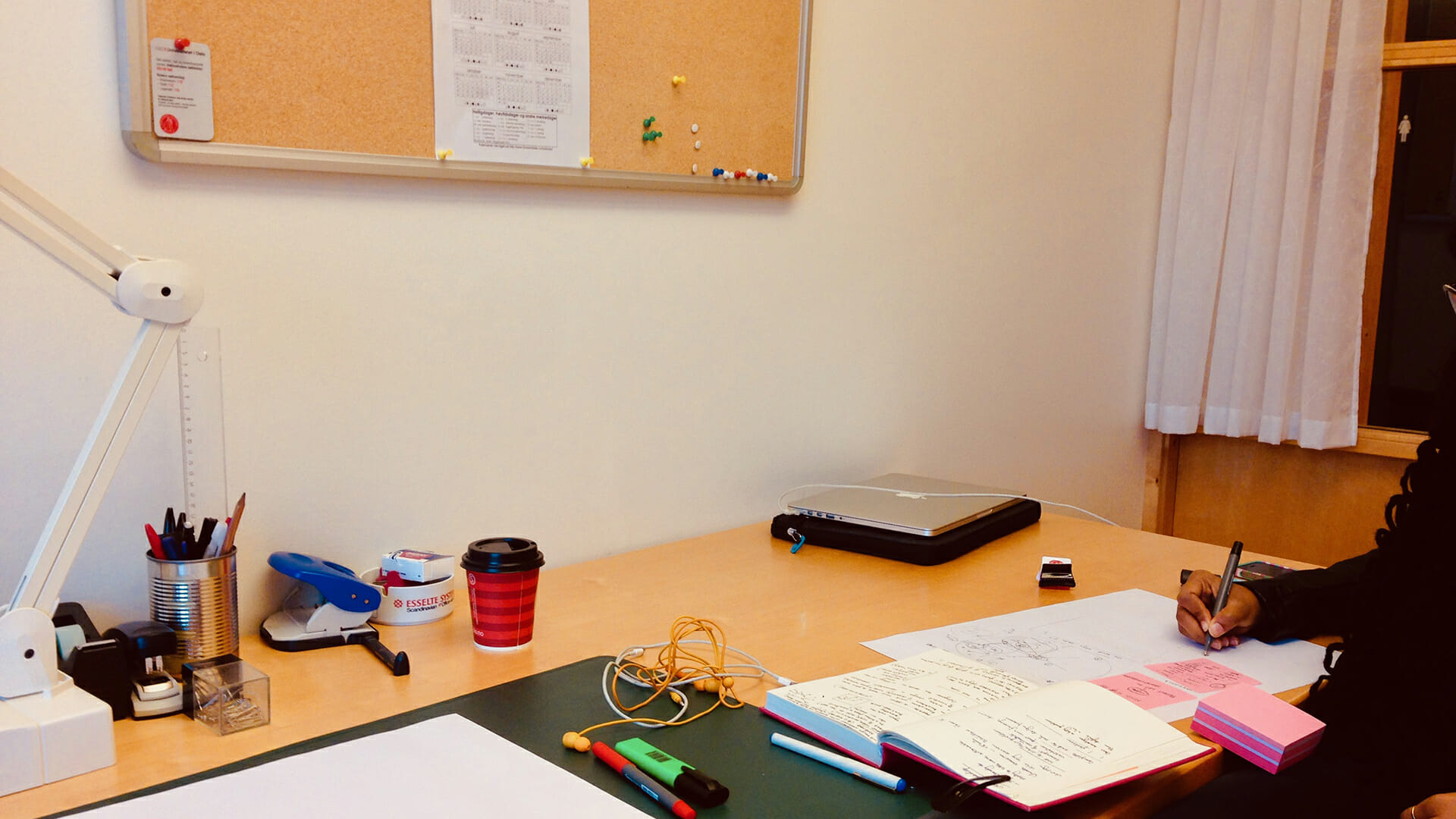
Working at the UiO Library’s digital services department
Deconstructing and Re-framing
At this stage, the main challenge for me was to come up with effective and engaging techniques and tools for introducing design to librarians without making it seem too alien and potentially daunting for them to apply in their own work practices.
I began by deconstructing different parts of the design process and particular design methods and identifying their core intent and actions. I used these reflections and my understanding of the librarian's routines, work practices, and vocabulary to create an introductory booklet introducing the design process and why it mattered at the library. Simultaneously, I started to develop a set of tools that were intended to help librarians get started with the design process easily and productively. These tools consisted of exploratory questions and prompts that librarians could reflect and explore both individually and in a team.
02/
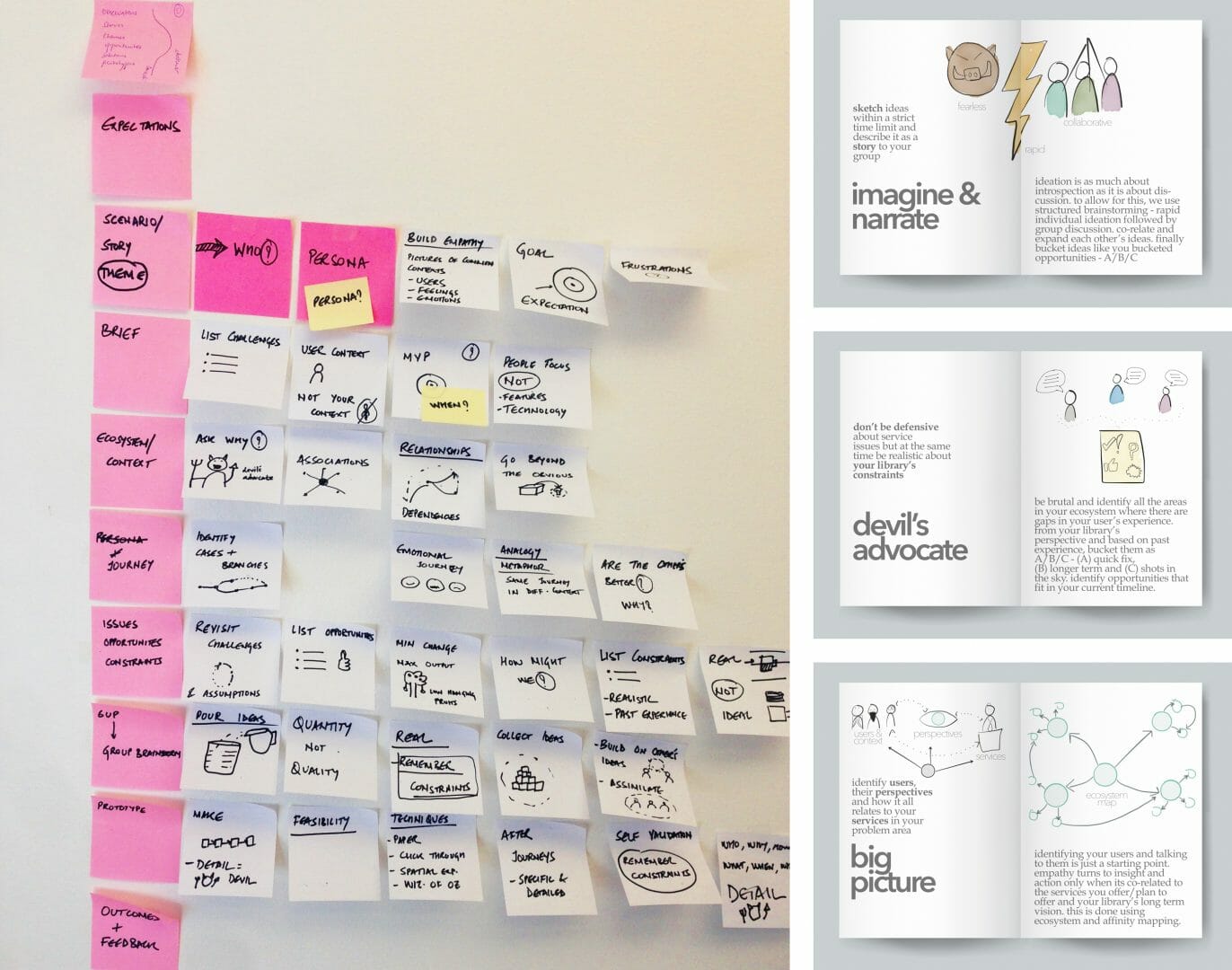
Deconstructing the design process and the methods I planned to introduce during the workshops
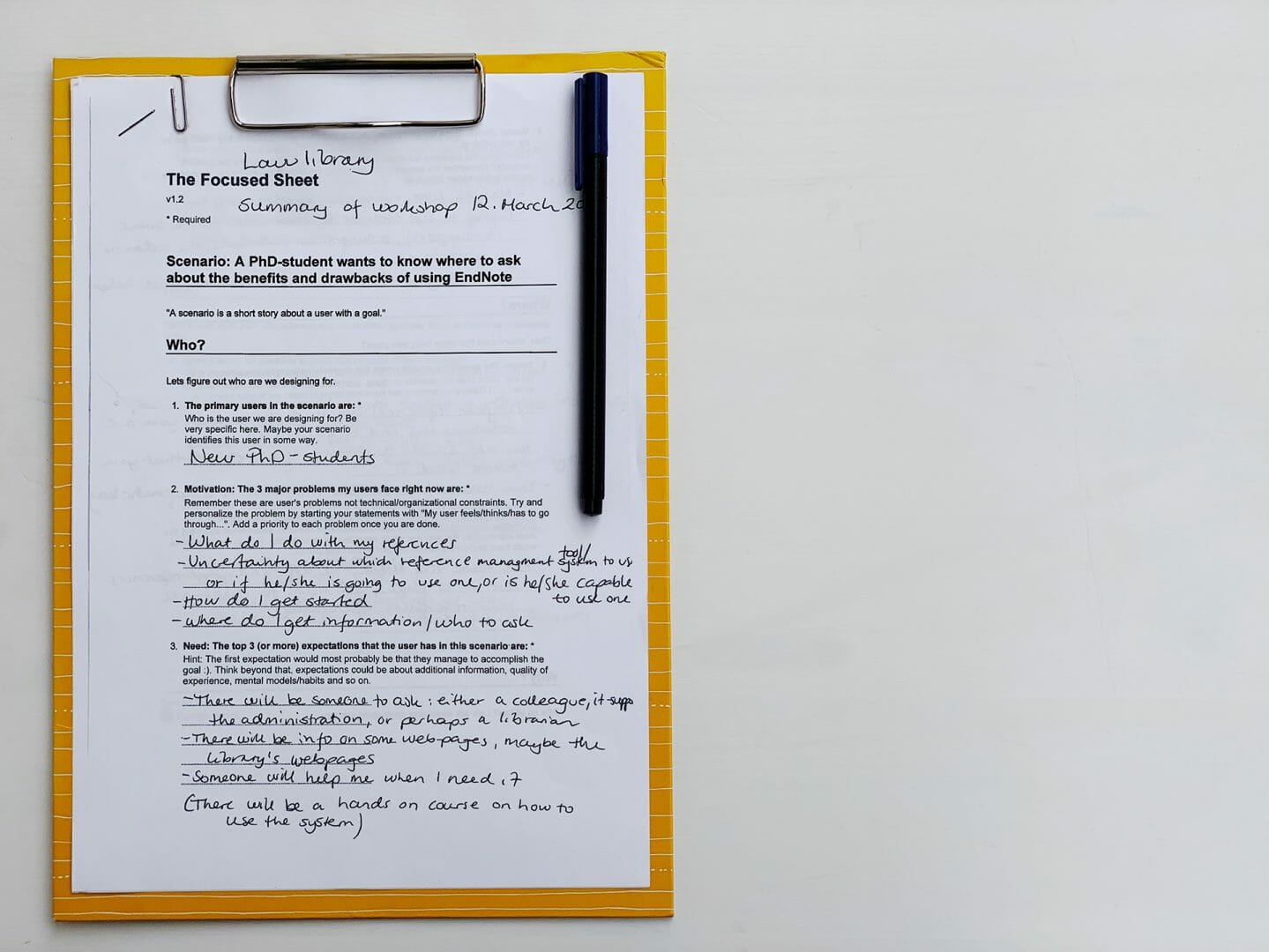
The focused sheet, one of the first tools I developed, was meant to help participants understand the problem being addressed in the workshop holistically – by helping understand the user, their context, the constraints, the motivation, and the goals
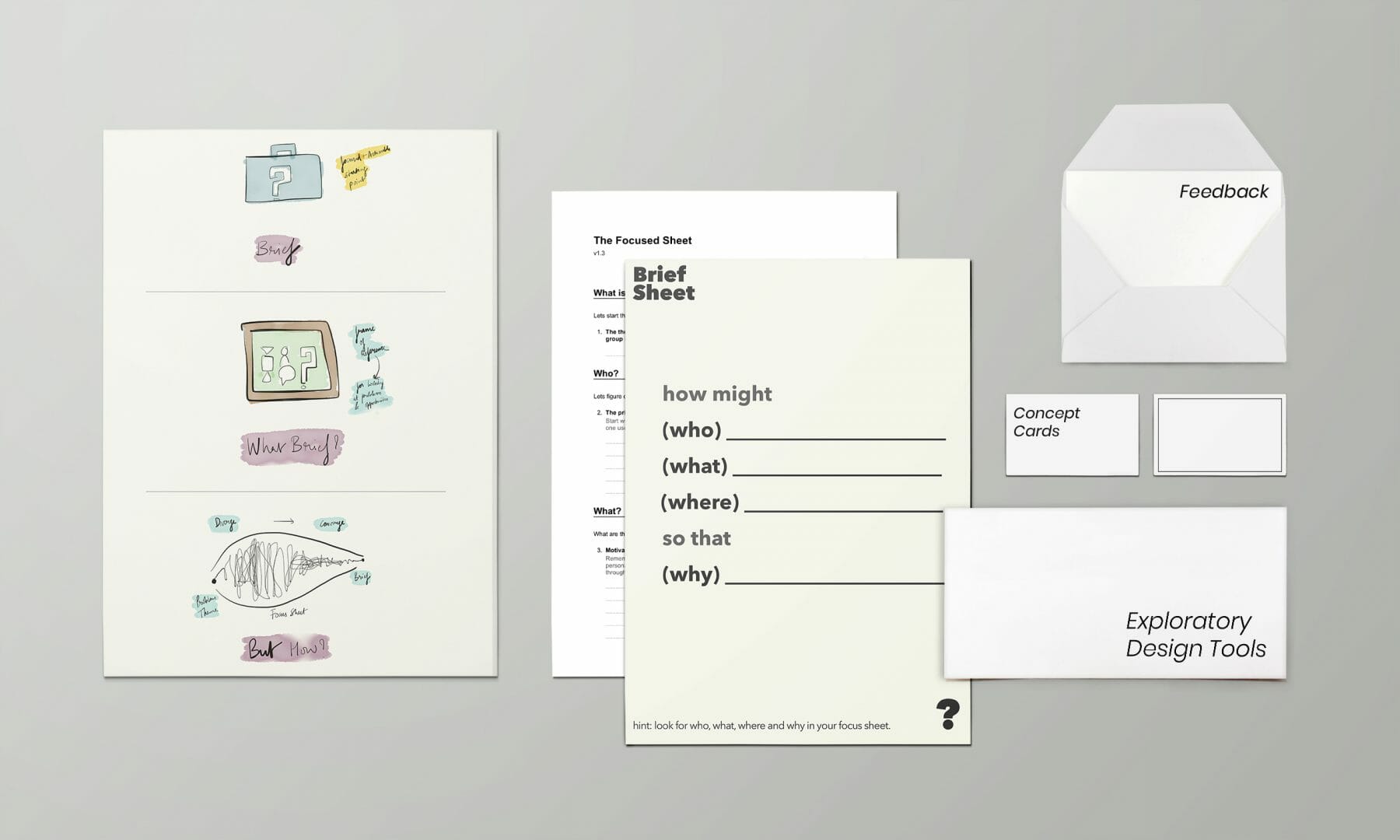
The initial toolkit – the brief sheet to discuss and frame the brief after exploring the who, what, where, and why of the problem through the focused sheet (see also the image above)
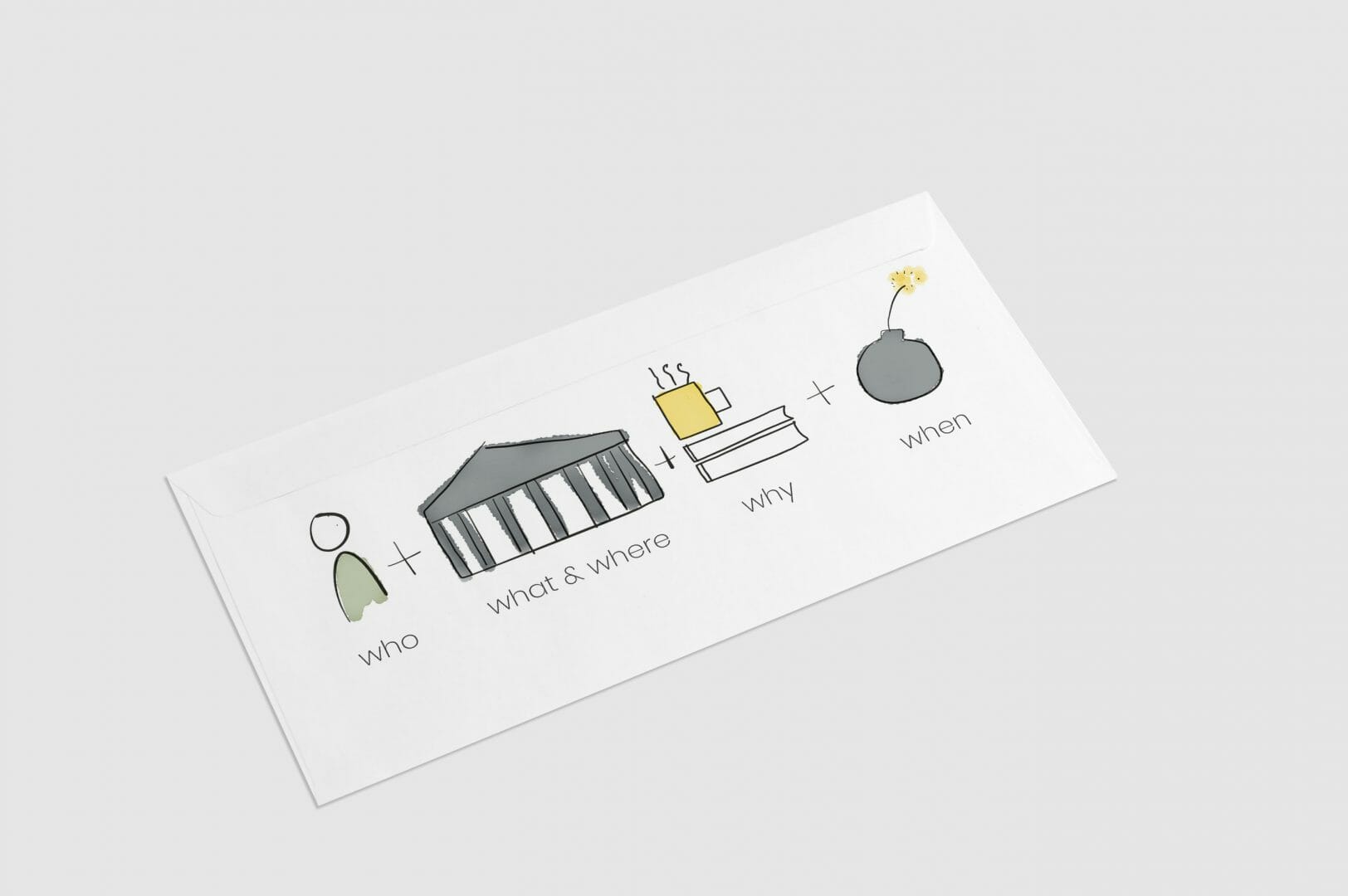
The scenario storyboarding prompt
I used both the tools and the booklet in the initial workshops. The feedback I received and my own observations of participants' engagement with them helped me iterate over these tools and the content in the booklet.
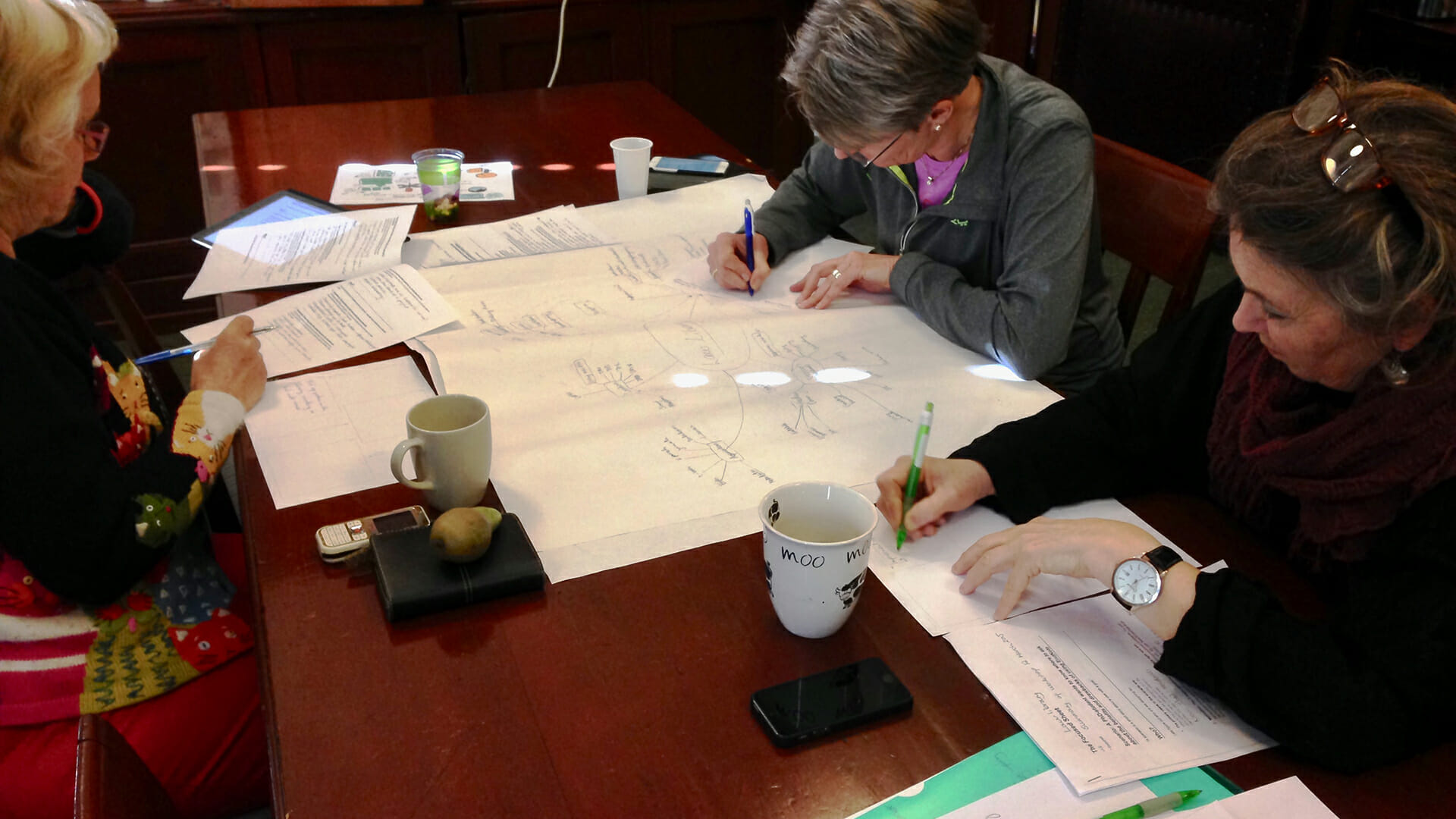
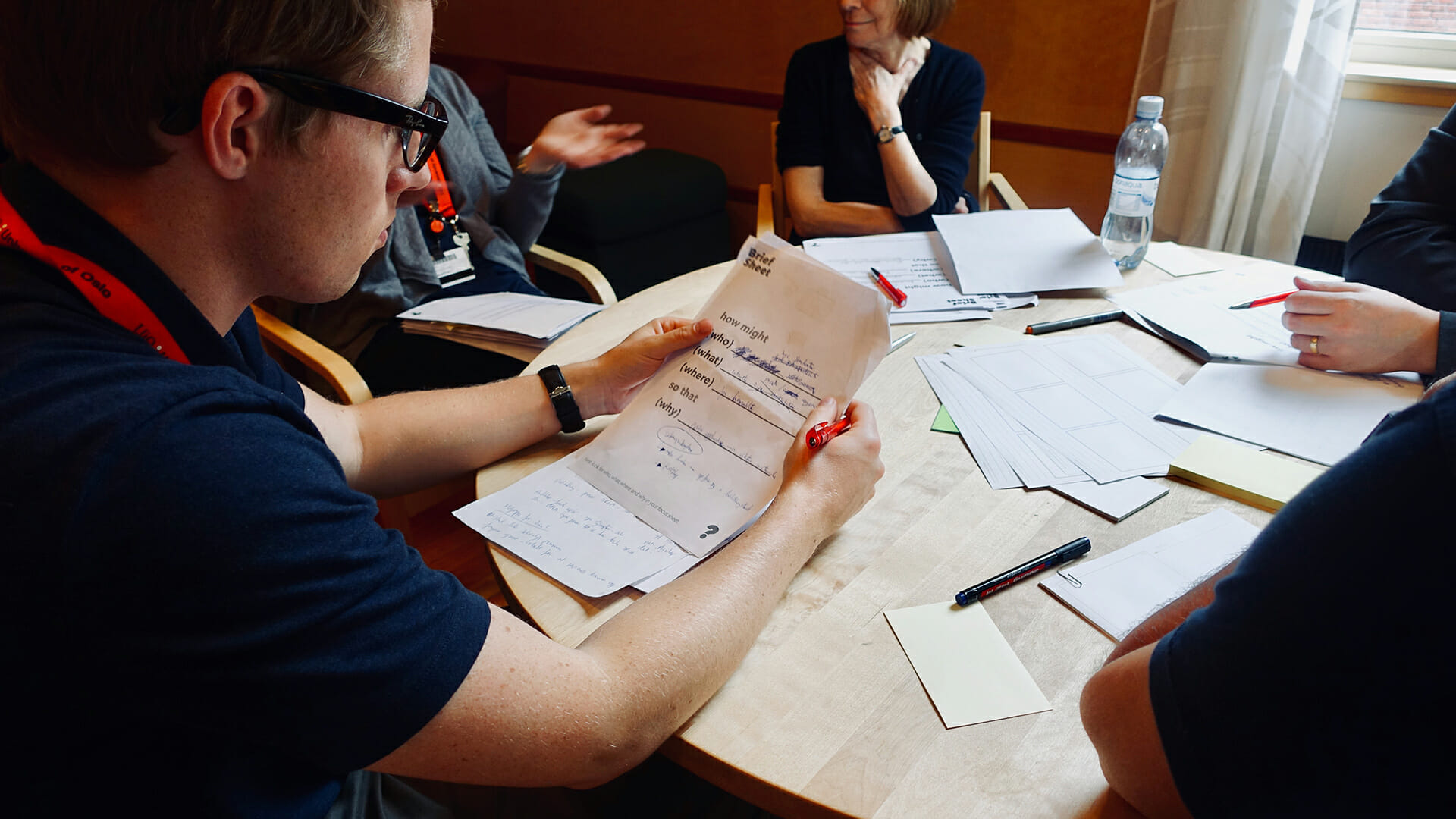
The tools being used in the early workshops
From an expert to a partner
03/ From an expert to a partner
03/ From an expert to a partner
Two primary challenges became clear as I introduced design tools and methods in the workshops:
- While the booklet and the tools did make introducing design methods in the workshops easier, they didn't help the participants become confident with using design in their day to day work. Infact, for some participants, the tools made design seem like a specialised activity, different from what they do on a day-to-day basis, that required dedicated time (that they didn't have).
- A workshop format where I was leading the workshops on my own also had the risk of concluding once my contract with the library expired. But since only a few members of the library had any experience with design, nobody was confident enough to lead the workshops.
Two primary challenges became clear as I introduced design tools and methods in the workshops:
- While the booklet and the tools did make introducing design methods in the workshops easier, they didn't help the participants become confident with using design in their day to day work. Infact, for some participants, the tools made design seem like a specialised activity, different from what they do on a day-to-day basis, that required dedicated time (that they didn't have).
- A workshop format where I was leading the workshops on my own also had the risk of concluding once my contract with the library expired. But since only a few members of the library had any experience with design, nobody was confident enough to lead the workshops.
Two primary challenges became clear as I introduced design tools and methods in the workshops:
- While the booklet and the tools did make introducing design methods in the workshops easier, they didn't help the participants become confident with using design in their day to day work. Infact, for some participants, the tools made design seem like a specialised activity, different from what they do on a day-to-day basis, that required dedicated time (that they didn't have).
- A workshop format where I was leading the workshops on my own also had the risk of concluding once my contract with the library expired. But since only a few members of the library had any experience with design, nobody was confident enough to lead the workshops.
03/
“With all these [specialised terms related to design], everyone starts thinking about ‘what is UX?’ and ‘what is design thinking?’. Yeah, and that’s scary.
But [design is] just sort of thinking a bit different and I think that lowering the threshold is a smarter way to [introduce it at the library]. Then it’s for everybody because it’s not about just drawing a beautiful user journey.”
– One of the members of the library's CORe leadership team
“With all these [specialised terms related to design], everyone starts thinking about ‘what is UX?’ and ‘what is design thinking?’. Yeah, and that’s scary.
But [design is] just sort of thinking a bit different and I think that lowering the threshold is a smarter way to [introduce it at the library]. Then it’s for everybody because it’s not about just drawing a beautiful user journey.”
– One of the members of the library's CORe leadership team
“With all these [specialised terms related to design], everyone starts thinking about ‘what is UX?’ and ‘what is design thinking?’. Yeah, and that’s scary.
But [design is] just sort of thinking a bit different and I think that lowering the threshold is a smarter way to [introduce it at the library]. Then it’s for everybody because it’s not about just drawing a beautiful user journey.”
– One of the members of the library's CORe leadership team
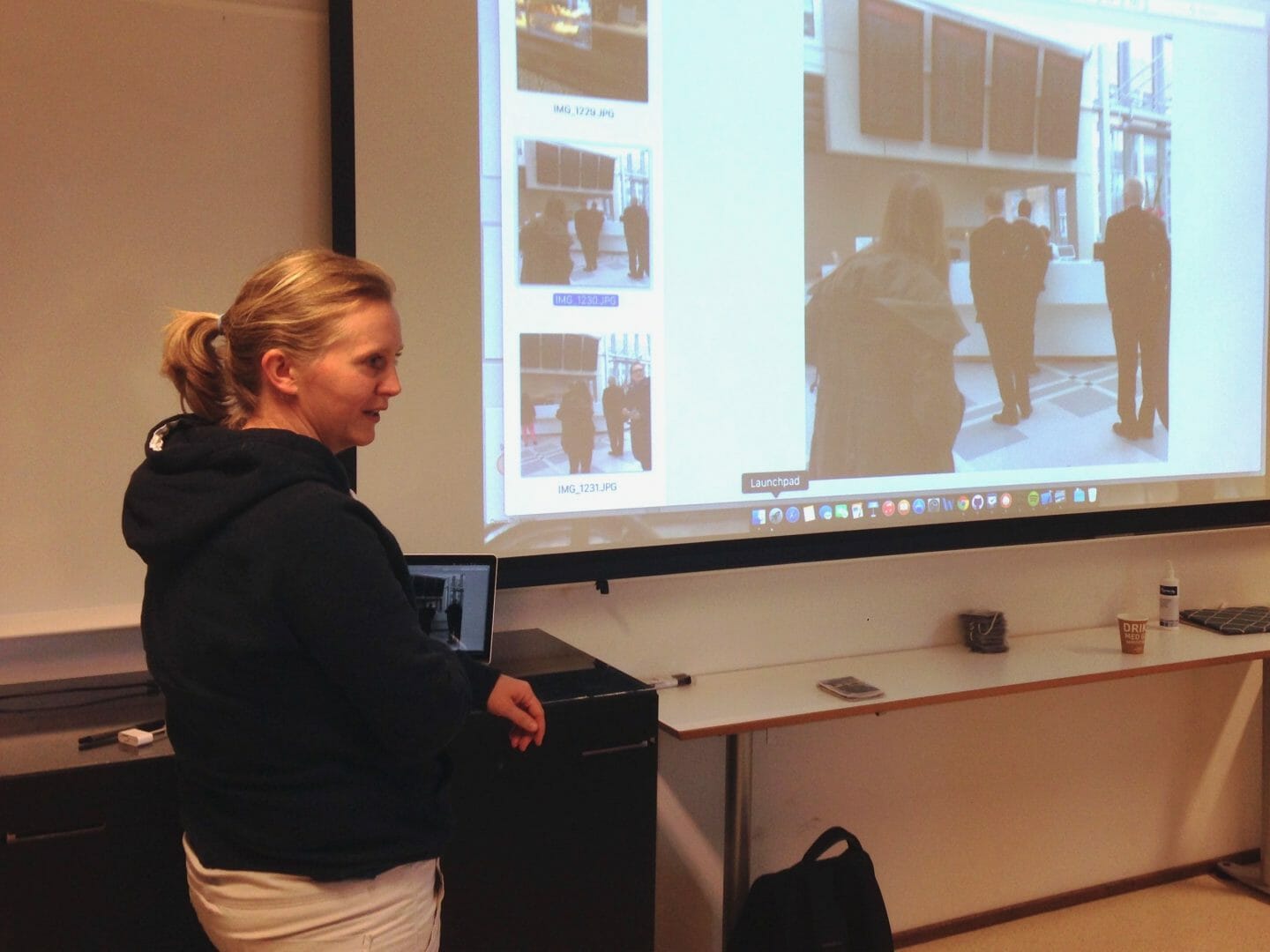
One of the librarians presenting the user research methods they have used in their work and what they learnt from it
As a result, I shifted my focus from attempting to create more tools and expanding the booklet to developing a more improvisational and open-ended approach for introducing design while also involving a team of librarians in the workshops to informally translate the intent of the methods and the approach. Moving away from using tools helped make the workshops more conversational and into a space where the participants could improvise and apply themselves in practical terms. Second, it also allowed librarians to define what design meant to them rather than have it be defined for them in a booklet or through tools. Finally, involving librarians in an informal capacity, just to talk about design in their own terms, helped them organically become confident with assuming a leadership role in a workshop.
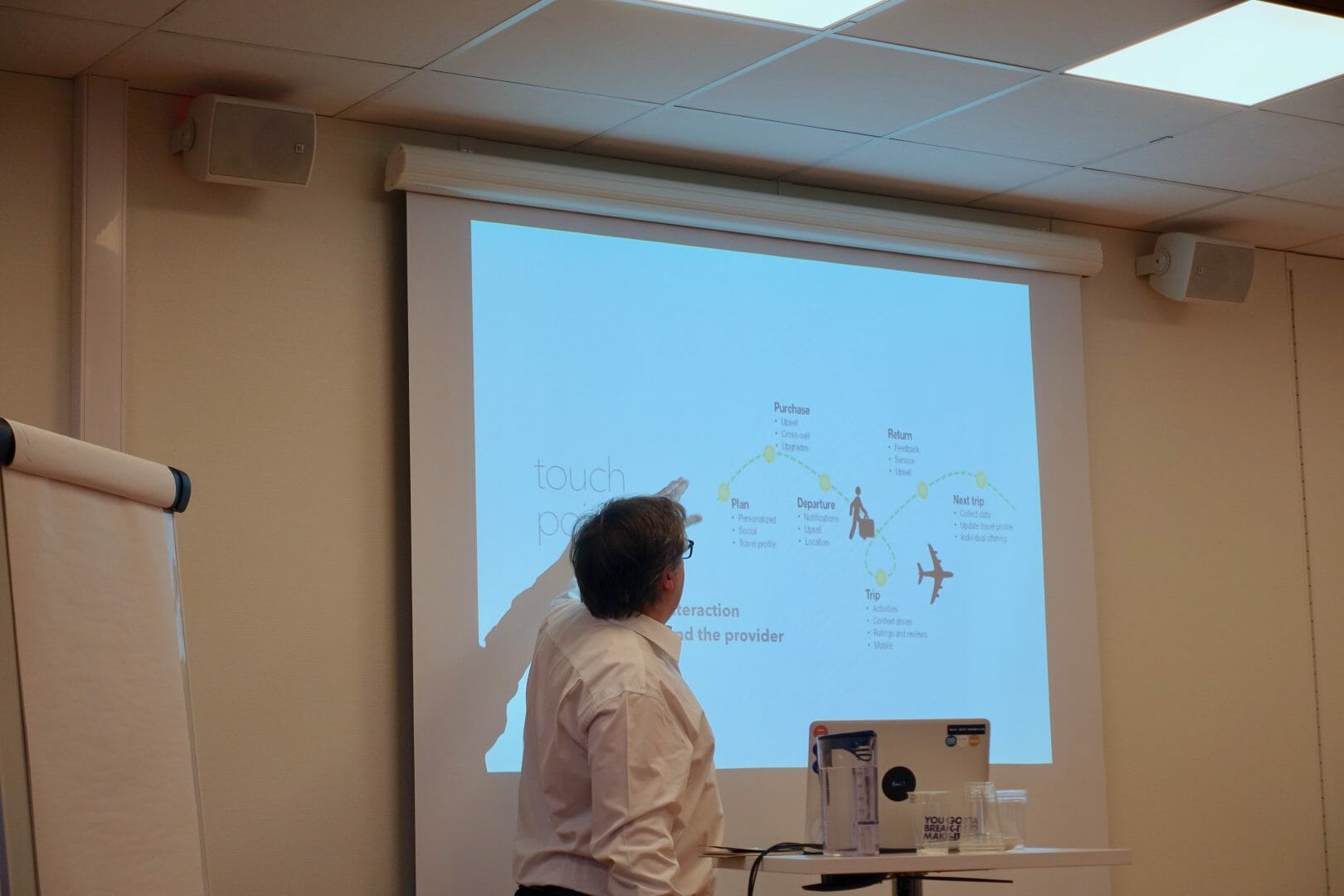
A senior member of the library staff introducing user journeys during a workshop
This shift was critical in changing the nature of my involvement in the project – from a design expert teaching methods and tools, to a partner with design expertise, collaboratively shaping a design approach that could be evolved, developed, and disseminated further even when my engagement with the project ended. As a result, while these workshops are still regularly conducted, the nature of my involvement changed over time, from leading the entire session to co-conducting it with other staff members from the library and eventually just helping conduct and plan them.
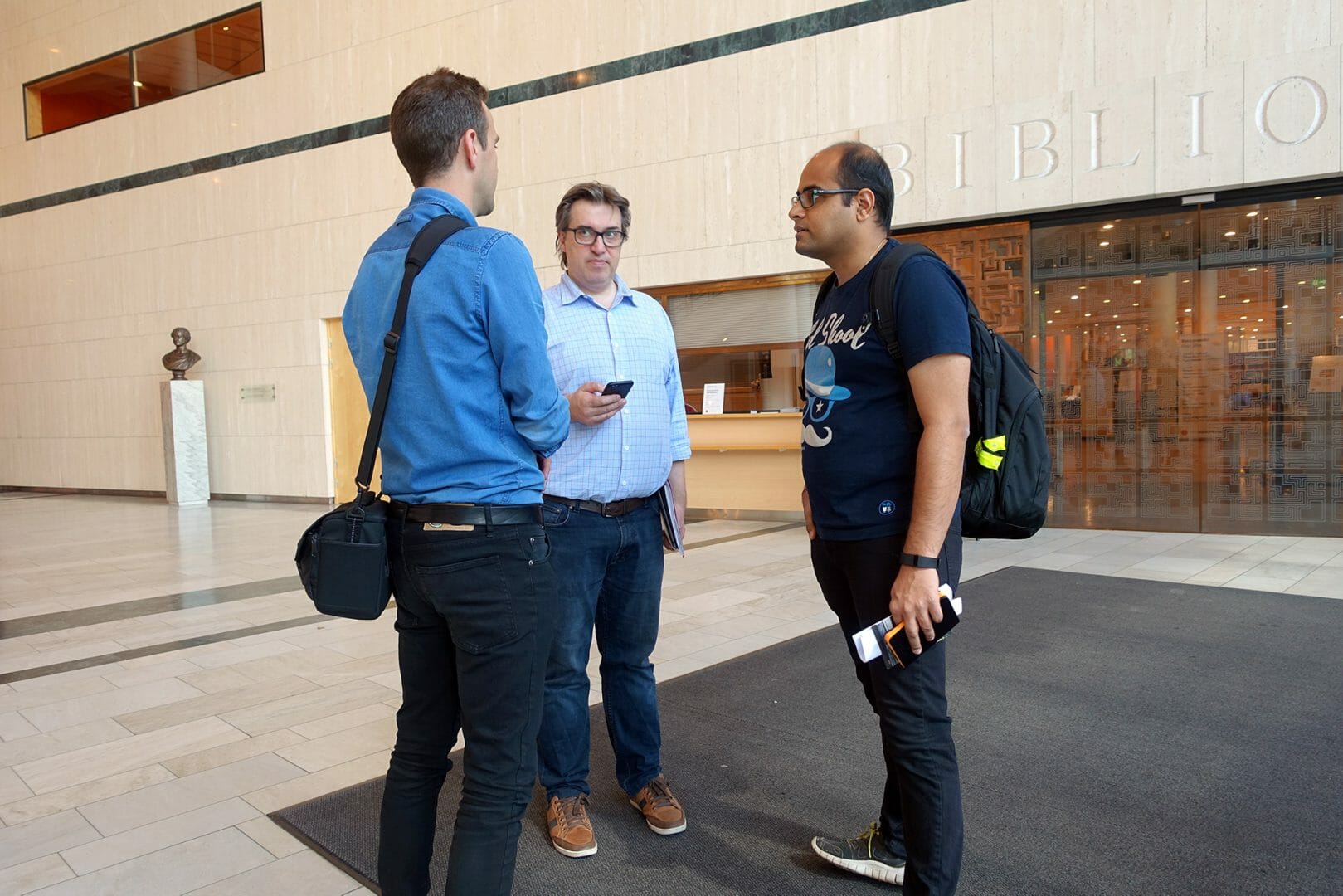
In-workshop discussions with senior staff from the digital services department at the UiO Library about design methods
impact
The UiO Library and Beyond!
The workshops and the overall approach were very well received at the University of Oslo library, with workshop participants often commenting on the applicability and relevance of design to their own practice.
“This way of thinking and working visually using mindmaps and sketching can hopefully help us work more constructively and collaboratively.
I feel like we need [such workshops] to happen more often, to question and maybe change the way we think in some ways.”
– Anonymised feedback at the humanities library, university of oslo
“I realised we need to pay more attention to our interactions with students/users. Its something that is a bit challenging, but at the same time very useful.
I plan to ask students for feedback about their use of the library when I communicate with them personally or over email.”
– Anonymised feedback at the medicine library, university of oslo
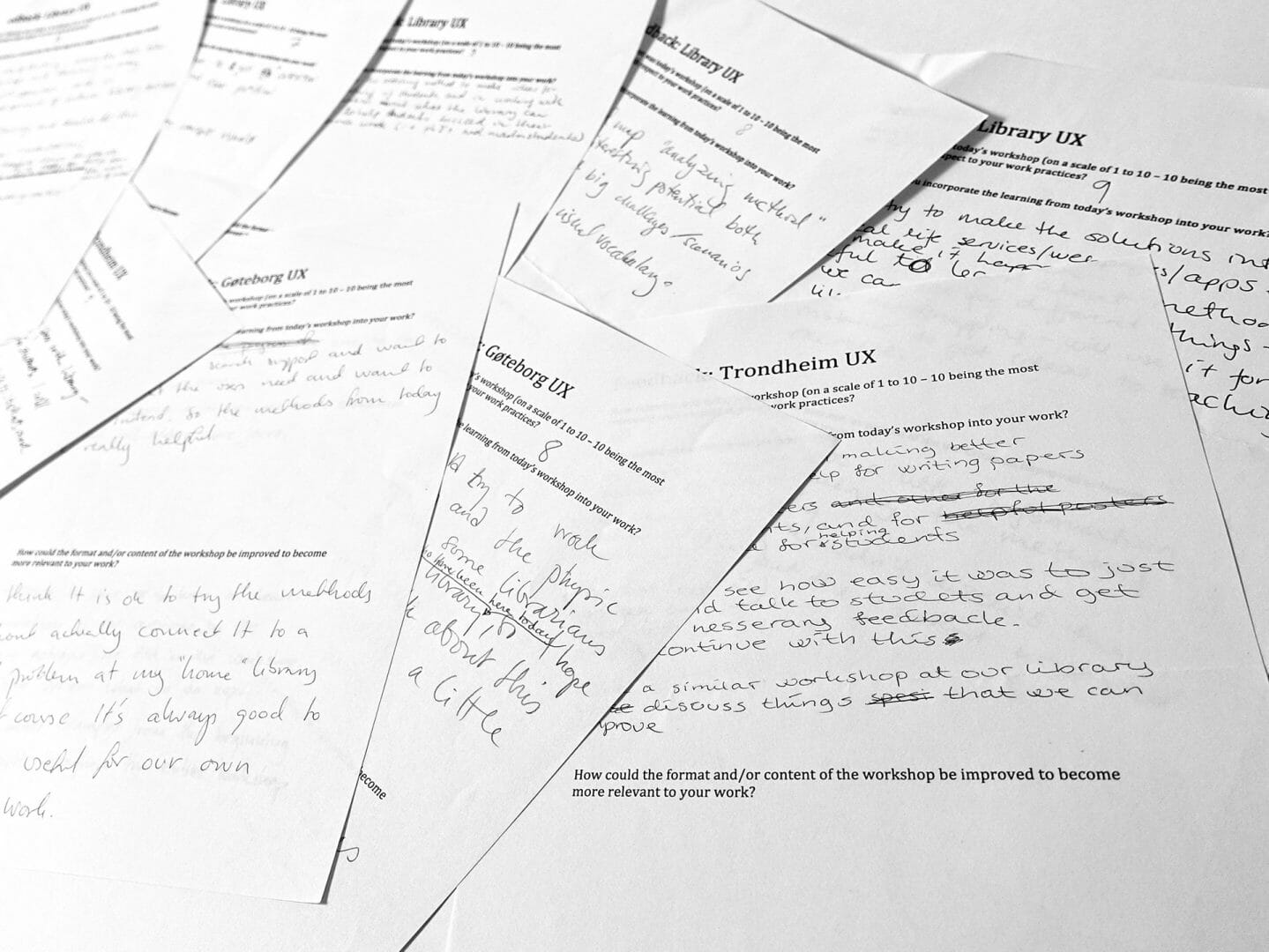
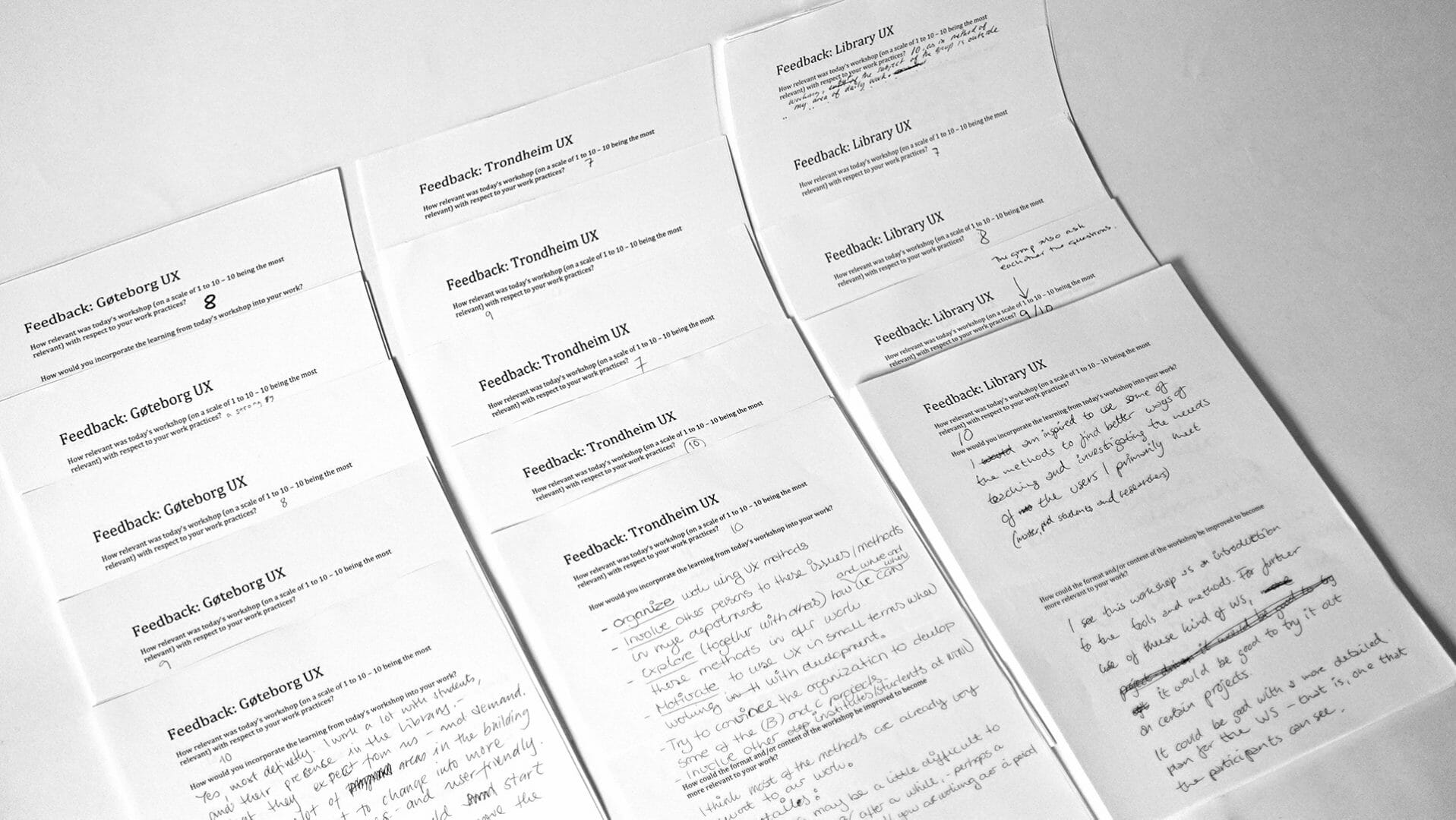
Feedback forms from the workshops
The popularity of the workshops within the university library helped grow interest in the approach from other university libraries through word of mouth recommendations. We were invited by university libraries at HIB Bergen, the Gothenburg University, NTNU Trondheim, and the digital services department at the National Library of Finland to conduct 1-2 day workshops and introduce the approach to their librarians and staff members.
“[Elements of the workshop] can be incorporated in most aspects of my work. I am inspired to develop services, not just be satisfied as things are. Also, having more dialogue with colleagues through co-operation across sections and work areas to make more informed decisions, to understand needs.
I want to be more creative in my approach to work. Make mistakes and try and fail, it's very important.”
– Anonymised feedback at the NTNU Library, Trondheim
“I can immediately see how some aspects of the workshop like the different ways of mapping can be used in ongoing projects. I think then over time, we could try them all for future projects as well.
Starting with a few aspects is maybe better because we always find it challenging to collect, structure, and apply the data and put it into solutions fast and over time.”
– Anonymised feedback at the Gothenburg university library
Finally, by the end of the project, a core LibraryUX team consisting of staff members and librarians was created at the library. This team continues to evolve the approach and workshop format while also routinely conducting design workshops at the UiO library and other libraries in the Nordic region.
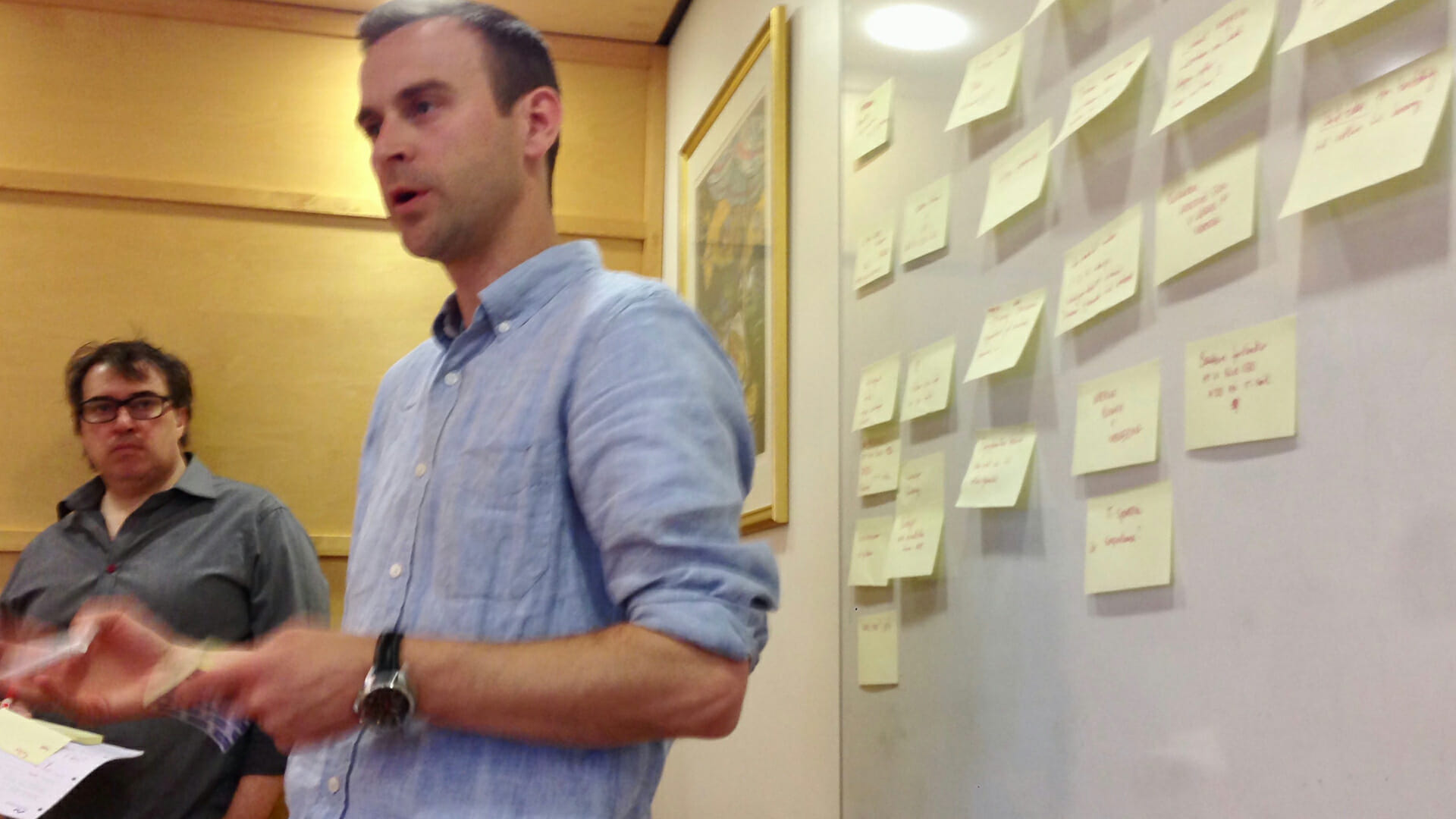
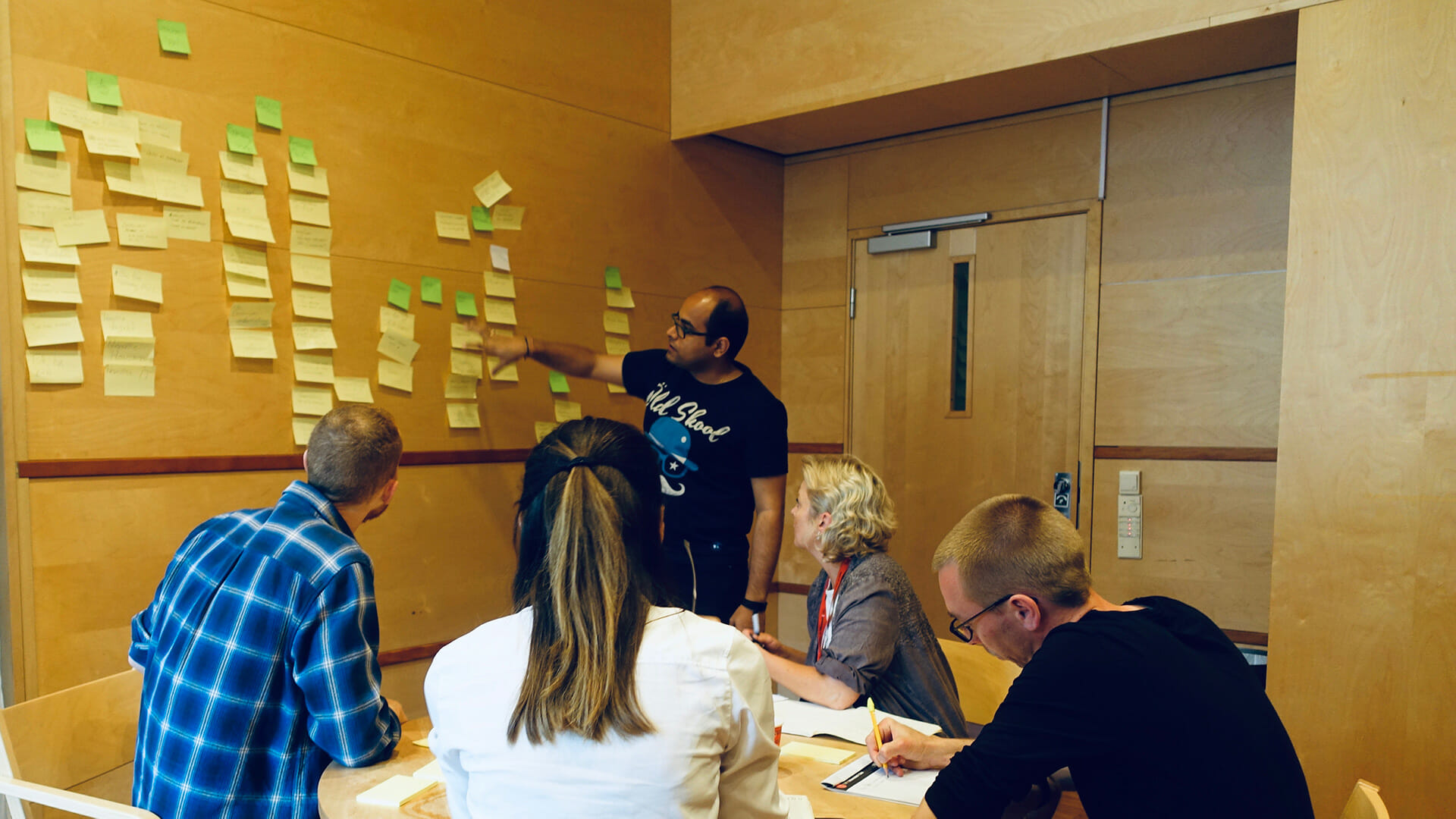
Discussions with participants during the workshops
Publications
I discussed the LibraryUX approach and workshops in two peer-reviewed research papers. The first paper was published in the Interaction Design & Architecture (IxD&A) Journal and the second was presented in the ServDes 2016 conference in Copenhagen, Denmark, with my colleague Swati Srivastava.
Research Papers
Pandey, S. (2015). Proto Design Practice: Translating design thinking practices to organizational settings. Interaction Design and Architecture(s) Journal, 27(Winter 2015), 129–158.
Pandey, S., & Srivastava, S. (2016). Knowledge Brokers in Service Design: Lessons from Organizational Studies. 317–326. Linköping University Electronic Press.

Presenting the LibraryUX approach at ServDes 2016
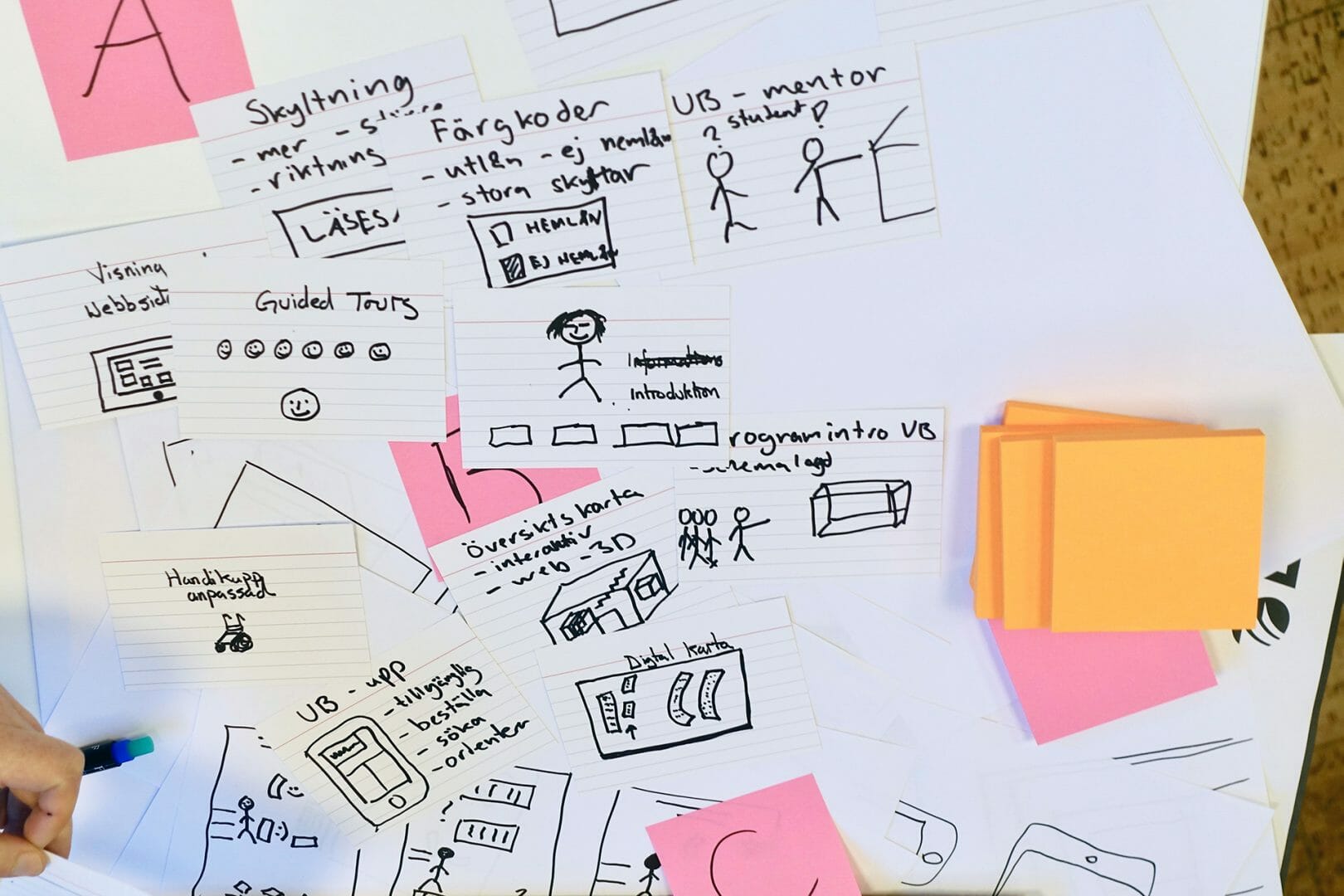
More Projects
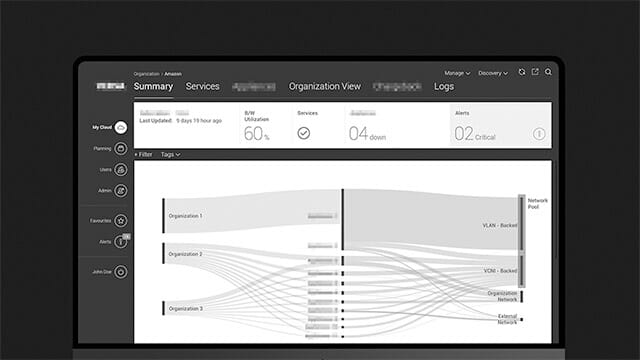
Versa Networks - Software Defined Network (SDN) Application0 to 1 product design for a SDN management application
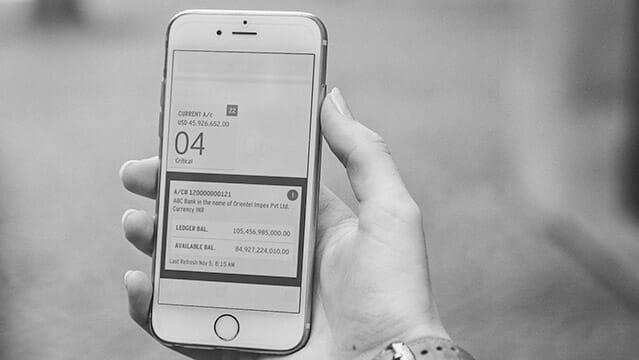
D+H India - Transaction Banking App0 to 1 design of a responsive transaction banking app
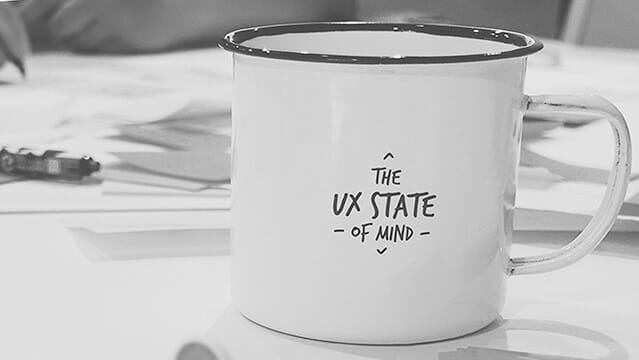
FriluxBranding Design at the University of Oslo Library
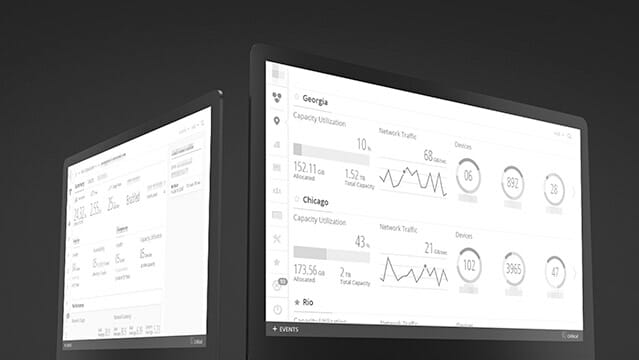
IBM Cloud Storage ManagementRe-designing the cloud object storage application to seamlessly manage and monitor large-scale storage clusters
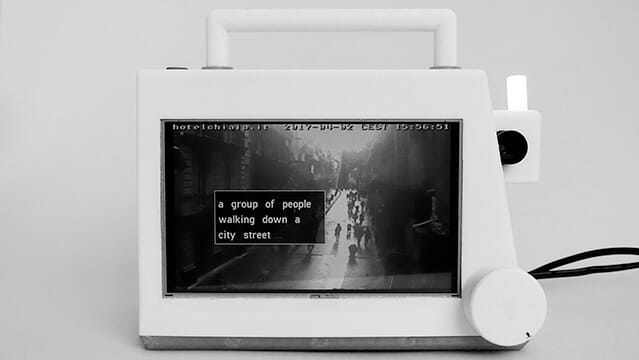
EyespyTVProbing smart surveillance through a portable TV and cultural probes
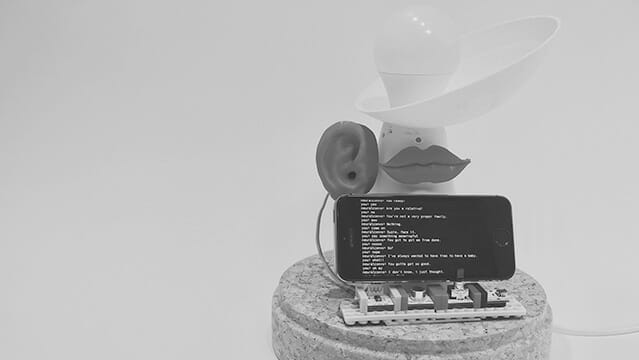
HearsayA voice-enabled lamp that is ‘always in conversation’
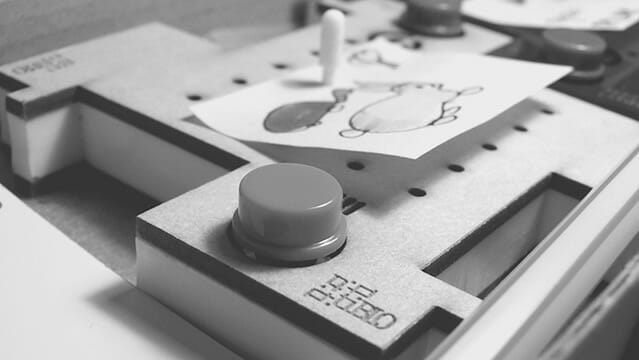
TibloDesigning an open-ended and tangible learning aid for young children with dyslexia
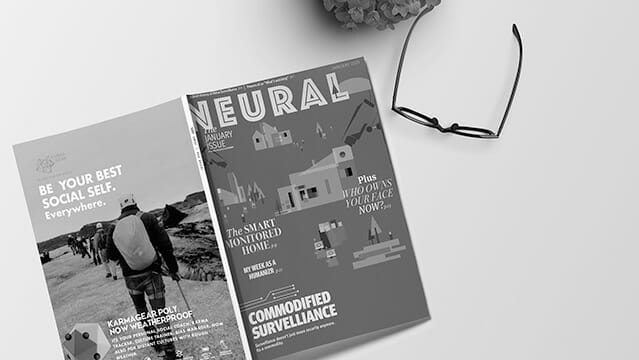
NeuralA fictional technology magazine from 2025
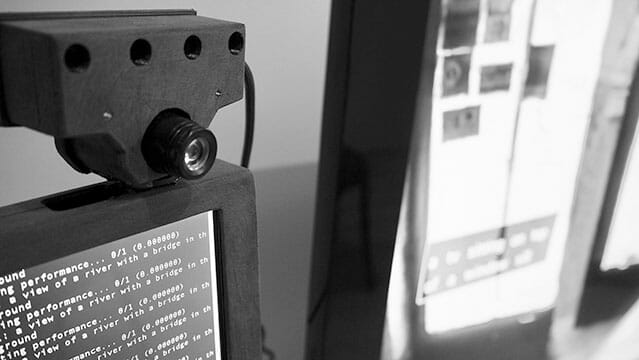
EyespyInteracting with Smart Surveillance